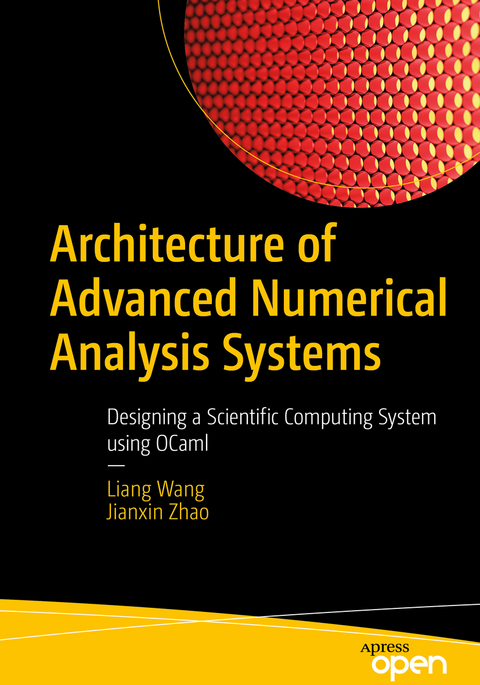
Architecture of Advanced Numerical Analysis Systems
Apress (Verlag)
978-1-4842-8852-8 (ISBN)
You'll first learn the various components in a modern numerical computation library. Then, you will learn how these components are designed and built up and how to optimize their performance. After reading and using this book, you'll have the knowledge required to design and build real-world complex systems that effectively leverage the advantages of the OCaml functional programming language.
What You Will Learn
Optimize core operations based on N-dimensional arrays
Design and implement an industry-level algorithmic differentiation module
Implement mathematical optimization, regression, and deep neural network functionalities based on algorithmic differentiation
Design and optimize a computation graph module, and understand the benefits it brings to the numerical computing library
Accommodate the growing number of hardware accelerators (e.g. GPU, TPU) and execution backends (e.g. web browser, unikernel) of numerical computation
Use the Zoo system for efficient scripting, code sharing, service deployment, and composition
Design and implement a distributed computing engine to work with a numerical computing library, providing convenient APIs and high performance
Who This Book Is For
Those with prior programming experience, especially with the OCaml programming language, or with scientific computing experience who may be new to OCaml. Most importantly, it is for those who are eager to understand not only how to use something, but also how it is built up.
Liang Wang is the Chief AI Architect at Nokia, the Chief Scientific Officer at iKVA, a Senior Researcher at the University of Cambridge, and an Intel Software Innovator. He has a broad research interest in artificial intelligence, machine learning, operating systems, computer networks, optimization theory, and graph theory. Jianxin Zhao is a PhD graduate from the University of Cambridge, supervised by Prof. Jon Crowcroft. His research interests include numerical computation, high-performance computing, machine learning, and their application in the real world.
Chapter 1: Introduction.-Chapter 2: Core Optimization.- Chapter 3: Algorithm Differentiation.- Chapter 4: Mathematical Optimization.- Chapter 5: Deep Neural Networks.- Chapter 6: Computation Graph.- Chapter 7: Performance Accelerators.- Chapter 8: Compiler Backends.- Chapter 9: Composition and Deployment.- Chapter 10: Distributed Computing.- Chapter 11: Testing Framework.- Appendix A: Basic Analytics Examples.- Appendix B: System Conventions.- Appendix C: Metric Systems and Constants.- Appendix D: AlgoDiff Module.- Appendix E: Neural Network Module.- Appendix F: Actor System for Distributed Computing.- Bibliography.
| Erscheinungsdatum | 10.01.2023 |
|---|---|
| Zusatzinfo | 43 Illustrations, color; 14 Illustrations, black and white; XIII, 472 p. 57 illus., 43 illus. in color. |
| Verlagsort | Berkley |
| Sprache | englisch |
| Maße | 178 x 254 mm |
| Themenwelt | Mathematik / Informatik ► Informatik ► Programmiersprachen / -werkzeuge |
| Informatik ► Theorie / Studium ► Algorithmen | |
| Schlagworte | Big Data • Code • Computational • Data Science • Debugging • Engineering • Functional • Math • Numerical • OCaml • open access • Open Source • OWL • Programming language • Scientific • Scientific Computing • source |
| ISBN-10 | 1-4842-8852-1 / 1484288521 |
| ISBN-13 | 978-1-4842-8852-8 / 9781484288528 |
| Zustand | Neuware |
| Haben Sie eine Frage zum Produkt? |
aus dem Bereich


